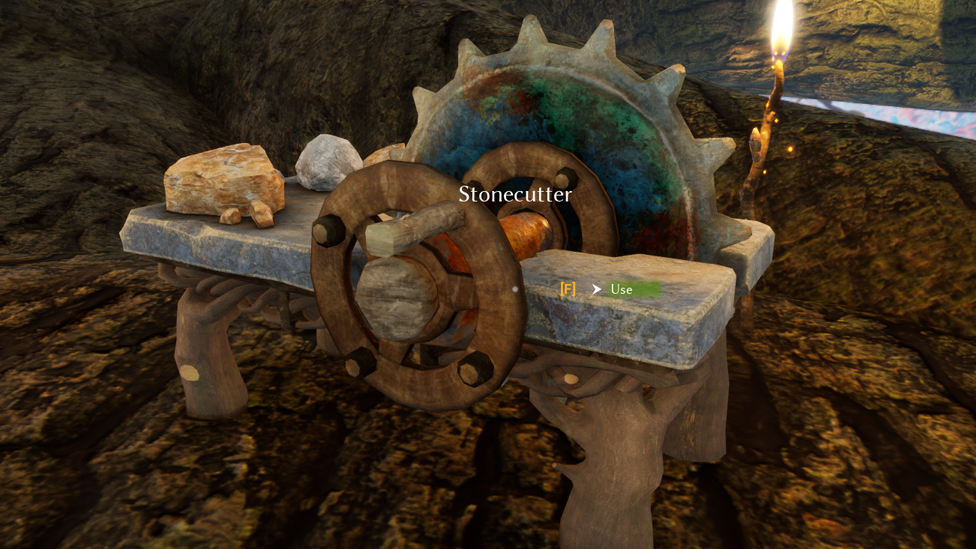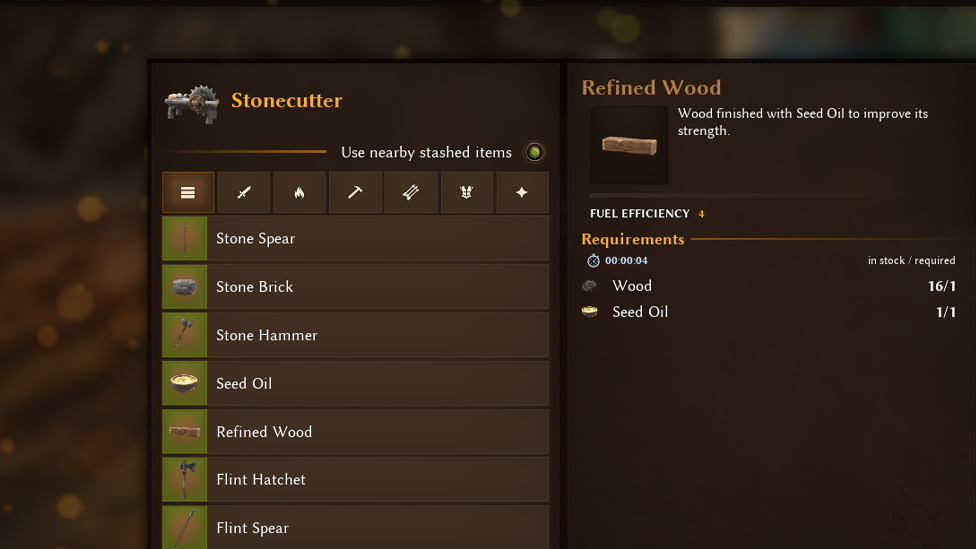How To Get Smalland Stonecutter
What’s the Deal with the Stonecutter?

Make Your Own Smalland Server
The Smalland stonecutter is like that overachieving friend who’s good at everything. This crafting station lets you make stronger tools, sturdier weapons, and essential resources like Seed Oil and Refined Wood. It’s crafted from strange artifacts (because of course it is—this is Smalland, after all) and shapes complex, hardy materials that other stations can only dream of handling.
But don’t just take it at face value. The Stonecutter is the backbone of your crafting setup, especially if you’re tired of basic tools and want to move on to some real Smallfolk engineering.
Unlocking the Stonecutter
Before you can enjoy the magic of the Stonecutter, you’ll need two things:- A Workbench
- A Mandibular Pickaxe
The Workbench: Your Starting Line
The Workbench is your very first production utility building and an absolute must-have. Not only is it used to craft tools, armor, and repair your gear, but it’s also a stepping stone to unlocking bigger and better stations—like the Stonecutter.Pro tip: The Workbench lets you repair items for free if they’re not damaged beyond 25%. If you’re a resource hoarder (no judgment), repairing early will save you tons of materials.
Mandibular Pickaxe: The Starter Tool
You’ll also need the Mandibular Pickaxe to harvest the Stone and Flint required for the Smalland stonecutter. It’s one of the first tools you’ll craft, primarily for resource harvesting. It can technically double as a weapon, but let’s be real—it’s like bringing a toothpick to a sword fight. Stick to harvesting with this one.Crafting the Stonecutter

Once you’ve set up your Workbench and gathered your materials with the Mandibular Pickaxe, it’s time to make the Stonecutter. Here’s what you’ll need:
- 10 Stone
- 5 Flint
- 5 Refined Wood
After you gather these, you’re ready to place your shiny new Stonecutter and start cranking out advanced resources and items.
What Can the Stonecutter Do?
This crafting station is where the magic happens. Here’s what you’ll use the Stonecutter for:1. Stronger Tools and Weapons
The Smalland stonecutter takes your arsenal to the next level. Say goodbye to weak starter gear and hello to tools and weapons crafted from rocky materials like Stone and Flint. These upgrades aren’t just for show—they’ll help you deal more damage to enemies and harvest resources more efficiently.
Weapons in Smalland are incredibly varied, with basic and heavy attacks for melee weapons. Heavy hits might be slower, but they pack a serious punch. And if ranged combat is your thing, the Stonecutter also plays a role in creating the ammo you’ll need to keep enemies at bay.
2. Seed Oil
Seed Oil is one of the most versatile crafted resources in the game. Made by grinding Seeds in the Stonecutter, it’s a crucial ingredient for crafting food, potions, and Refined Wood. If you’re planning on building a stronghold or whipping up some advanced recipes, stockpiling Seed Oil should be a priority.
3. Refined Wood
Refined Wood is another crafted resource you’ll make with the Stonecutter by combining Seed Oil and Wood. It’s a cornerstone for advanced tools, weapons, and base structures. If you’re serious about upgrading your base or gear, you’ll need a steady supply of this stuff.

Stonecutter Tips & Tricks
Want to get the most out of your Stonecutter? Here are a few tips to keep in mind:- Gather More Than You Need
Stone and Flint are required for crafting at the Stonecutter and other stations. Always grab extra when you’re out exploring—you’ll thank yourself later. - Efficient Base Layout
Place your Stonecutter near your Workbench and other key stations. This minimizes back-and-forth trips and keeps your crafting streamlined. - Keep Seed Oil Handy
Seed Oil isn’t just for crafting; it’s a resource you’ll use across multiple recipes. Grind Seeds regularly to maintain a healthy supply. - Upgrade When Possible
Don’t wait too long to upgrade your tools and weapons. The stronger they are, the more efficient your resource gathering and combat will be.
The Ultimate Gaming Experience With Scalacube
Scalacube gives you a high-quality gaming experience by providing trusted and reliable game server hosting for critically renowned titles including Smalland, Minecraft, Valheim, Rust and ARK: Survival Evolved, and many more.If you are looking to upgrade your Smalland experience, consider Smalland server hosting. With a dedicated Smalland server, you can have a smooth gaming experience with your friends and the best part is that it will be free of lags so that you can explore the wonderful world of Smalland. You will also have access to unlimited slots, modpacks, and free subdomains, all at a reasonable cost. If you are wondering how to make server, it is extremely easy. All you have to do is sign up, choose your server, and log in! In just a few your server will be ready.
Wrapping Up
The Stonecutter isn’t just a crafting station—it’s your ticket to thriving in Smalland. With the ability to craft stronger tools, versatile resources like Seed Oil, and essential materials like Refined Wood, this station is a cornerstone of your survival journey.Get that Mandibular Pickaxe ready, build your Stonecutter, and start shaping the world of Smalland to your advantage. The stronger your tools, the bigger your adventures!
Frequently Asked Questions
What is the Stonecutter Smalland?
The Stonecutter is a Crafting Station that may be constructed once the player has built a Workbench and obtained a Mandibular Pickaxe. It is used to strengthen tools and weapons made of stony materials like stone or flint. It is also used to manufacture other products, such as seed oil and refined wood.
What is the Smalland workbench?
The Workbench is a production utility building. It is required to make specific tools and armor, as well as to repair broken things.
How to use the workbench in Smalland?
If your equipment is not damaged beyond about 25%, there will be no repair cost; but, after 25%, the material cost will begin low and increase as the item gets more damaged. Repairing an item is always less expensive than manufacturing it from scratch.
Make Your Own Smalland Server
Copyright 2019-2025 © ScalaCube - All Rights Reserved.